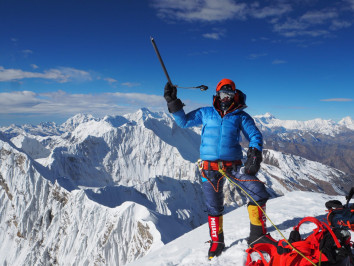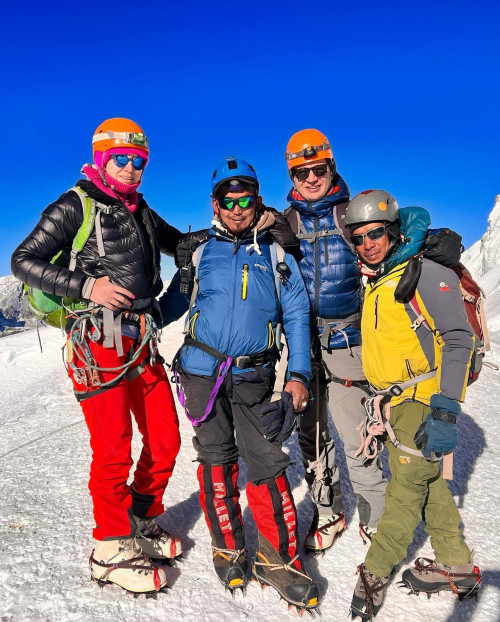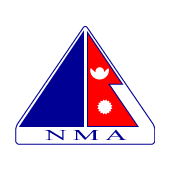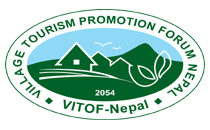Vajrayana Buddhism in Bhutan — History, Monasteries, Festivals & Pilgrimage
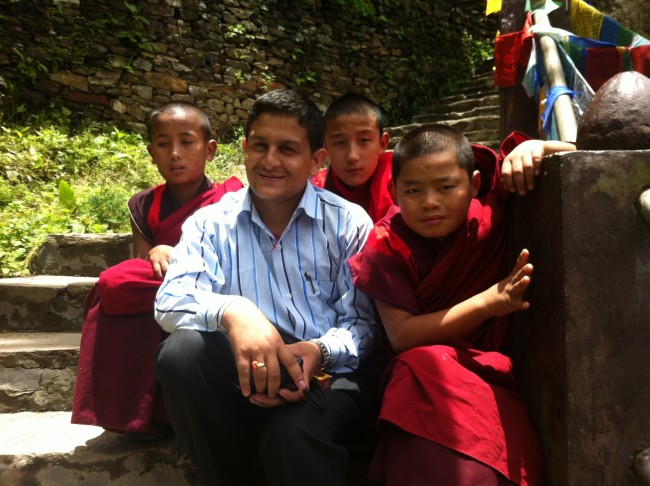
 Kedar Neupane
20th Sep, 2025
Kedar Neupane
20th Sep, 2025
Kedar Neupane
I am Kedar Neupane, a passionate traveler, entrepreneur, mentor, and social contributor, born and raised in a village near the Nepal-China border in Sindhupalchok, Nepal. With a Master’s degree in Business from Tribhuvan University and Level 2 proficiency in the German language, I have dedicated my life to tourism, trade, mentorship, and holistic well-being.
🌍 A Global Explorer with a Vision
Having explored 26+ countries, I have gained profound insights into diverse cultures, business landscapes, and global tourism. My travels have taken me to:
🇹🇭 Thailand | 🇧🇹 Bhutan | 🇲🇾 Malaysia | 🇸🇬 Singapore | 🇨🇳 China | 🇭🇰 Hong Kong | 🇩🇪 Germany | 🇵🇱 Poland | 🇦🇹 Austria | 🇨🇭 Switzerland | 🇭🇺 Hungary | 🇳🇱 Netherlands | 🇧🇪 Belgium | 🇫🇷 France | 🇦🇪 UAE | 🇬🇧 UK | 🇺🇸 USA | 🇹🇷 Turkey | 🇶🇦 Qatar | 🇮🇳 India | 🇮🇩 Indonesia | 🇨🇦 Canada
Through my journeys, I have developed a deep appreciation for cultural exchange, adventure tourism, and sustainable business practices.
🏔️ Entrepreneurial & Professional Journey
I am actively involved in tourism, trade, and mentorship, leading multiple ventures that promote sustainable travel, adventure tourism, and business development:
✔ Founder & MD – Actual Adventure Pvt. Ltd. (A leading adventure travel company in Nepal)
✔ CEO – Himalayas Destination Management Company (Creating premium travel experiences)
✔ MD – Nepal Export & Import Pvt. Ltd. (Promoting Nepalese products globally)
✔ MD – Actual Mentor Pvt. Ltd. (Empowering entrepreneurs and professionals)
✔ Chairman – World Expedition Nepal (Focusing on high-altitude expeditions and trekking)
Through my entrepreneurial journey, social contributions, global explorations, and commitment to lifelong learning, I strive to inspire others to pursue their passions while making a meaningful difference. My dream is to build a world where travel, business, and holistic well-being come together, fostering growth, sustainability, and happiness for all.
Bhutan is one of the last strongholds of Vajrayana Buddhism, a spiritual path rooted in tantric practices that combine philosophy, ritual, meditation, and devotion to reach enlightenment. Unlike in many countries, Buddhism in Bhutan is not confined to monasteries—it permeates every aspect of life. From fortress-monasteries overlooking valleys to vibrant mask dances in village squares, the teachings of Vajrayana remain the guiding force of Bhutanese culture, politics, and identity.
Table of Contents
Bhutan is one of the last remaining strongholds of Vajrayana Buddhism, a profound spiritual path that integrates tantric philosophy, meditation practices, ritual ceremonies, and deep devotion as a way to achieve enlightenment. Unlike many parts of the world where Buddhism has become more of a private or monastic pursuit, in Bhutan, it is a living tradition interwoven with the fabric of everyday life.
From the snow-capped mountains to the fertile valleys, every corner of Bhutan carries a spiritual imprint — colorful prayer flags flutter on high passes, whitewashed stupas line the roads, and sacred mantras echo in the daily chants of monks and laypeople. Vajrayana teachings are not only preserved in the country’s monasteries but are also practiced by farmers, artisans, kings, and ordinary villagers alike, making Bhutan a nation where spiritual practice and cultural identity are inseparable.
Central to Bhutanese Vajrayana practice are rituals and symbols such as mandalas, butter lamps, masked cham dances, and elaborate empowerments (wang). These are not just religious observances but also expressions of the nation’s collective devotion, believed to bring harmony, prosperity, and protection from negative forces. The Bhutanese monarchy itself is deeply rooted in Buddhist values, with the Je Khenpo (Chief Abbot) playing a role parallel to the King in shaping the country’s spiritual and moral direction.
Bhutan’s landscape is dotted with fortress-monasteries (dzongs) that serve both as religious centers and administrative hubs, a reflection of how governance and Buddhism have been historically intertwined. Annual tsechu festivals, where sacred dances dramatize the teachings of Guru Padmasambhava (the revered “Second Buddha”), turn village squares and dzong courtyards into spaces of communal celebration and spiritual renewal.
What makes Bhutan unique is the way Vajrayana Buddhism permeates daily routines and national policy alike. Even the country’s modern philosophy of Gross National Happiness (GNH) is inspired by Buddhist principles, emphasizing compassion, mindfulness, and harmony with nature over material growth. This integration ensures that Bhutan remains not only a spiritual sanctuary for Vajrayana Buddhism but also a model of how ancient wisdom can guide a modern nation.
Historical roots: Guru Padmasambhava
The story of Vajrayana Buddhism in Bhutan begins with Guru Padmasambhava, also known as Guru Rinpoche, the "Second Buddha." In the 8th century, he journeyed from India to the Himalayas, introducing advanced tantric methods and subduing local deities to make the land receptive to Buddhist teachings. Bhutanese legends describe him flying on the back of a tigress to meditate in a cave at Paro Taktsang (Tiger’s Nest Monastery), one of the country’s holiest pilgrimage sites. His influence is so profound that almost every monastery and festival in Bhutan honors his life and teachings.
Major schools: Drukpa Kagyu and Nyingma
Two main traditions dominate Bhutanese Vajrayana practice: Drukpa Kagyu and Nyingma. The Drukpa Kagyu lineage, founded by Tsangpa Gyare in Tibet, was firmly established in Bhutan in the 12th century. It became the state religion under the leadership of Shabdrung Ngawang Namgyal, who unified Bhutan politically and spiritually in the 17th century. The Nyingma school, the oldest of Tibetan Buddhism, also remains influential, particularly in central Bhutan’s Bumthang Valley, where many of its ancient monasteries are located. Together, these schools maintain Bhutan’s spiritual heritage through monastic institutions, tantric rituals, and oral transmissions.
Monastic institutions and dzongs
Bhutanese Buddhism is uniquely tied to its dzongs—fortress-like monasteries that serve as both religious and administrative centers. These structures, such as Punakha Dzong and Trongsa Dzong, house monks, sacred relics, and government offices. The monastic body, led by the Je Khenpo (chief abbot), plays a vital role in shaping education, culture, and national events. Thousands of monks undergo rigorous training in philosophy, meditation, debate, and ritual performance, ensuring that Vajrayana practices remain alive and accessible to the public.
Rituals and tantric practice
Vajrayana emphasizes practices designed to transform the mind quickly. Central to this are empowerments (initiation rituals), deity yoga (visualizing oneself as a Buddha or enlightened being), mantra recitation, mandala offerings, and guru devotion. Rituals also include fire pujas, protective ceremonies, and community blessings led by lamas. These methods, considered advanced compared to other Buddhist traditions, are deeply integrated into Bhutanese daily life—from prayer flags fluttering across mountain passes to butter lamps glowing in household shrines.
Pilgrimage sites (Paro Taktsang, Punakha Dzong, Bumthang)
Bhutan’s landscape is dotted with sacred sites that draw pilgrims from across the Himalayas.
-
Paro Taktsang (Tiger’s Nest Monastery) — the iconic cliffside monastery where Guru Padmasambhava meditated.
-
Punakha Dzong — the former capital’s fortress-monastery, where many royal and religious ceremonies take place.
-
Bumthang Valley — home to Jambay Lhakhang and Kurjey Lhakhang, ancient temples linked to Guru Rinpoche and Bhutan’s earliest Buddhist history.
Each site blends architectural beauty with spiritual power, offering visitors not just breathtaking views but also opportunities for reflection and merit-making.
Tsechu festivals and cham dances
The most colorful expression of Vajrayana Buddhism in Bhutan is seen in Tsechu festivals, celebrated annually in dzongs and monasteries. These festivals honor Guru Padmasambhava and feature cham dances—masked performances by monks and lay practitioners. Each dance has symbolic meaning, often depicting the triumph of good over evil, the teachings of impermanence, or the liberation of sentient beings. Tsechus also include public displays of giant thangkas (religious scrolls) and collective blessings, making them essential for both religious merit and community bonding.
Art, architecture, and material culture
Bhutanese Buddhist art is rich in symbolism and craftsmanship. Thangkas, mandalas, statues of Buddhas and bodhisattvas, and ornately carved wooden masks are integral to religious practice. Dzong architecture, with its towering white walls, golden roofs, and intricate woodwork, reflects a fusion of defense and devotion. Inside, murals depict tantric deities, protectors, and cosmological maps guiding practitioners on the path to enlightenment. Even daily items—prayer wheels, singing bowls, and rosaries—carry deep spiritual meaning in Bhutanese life.
Buddhism and modern Bhutan (policy, GNH, tourism)
Buddhism continues to shape Bhutan’s national policies. The government’s development model of Gross National Happiness (GNH) places cultural and spiritual well-being on par with economic progress. Monastic bodies are state-supported, and festivals are nationally recognized holidays. At the same time, Bhutan balances its Buddhist heritage with tourism, inviting travelers to witness its spiritual richness while maintaining respect for sacred traditions. This balance ensures that modernization does not dilute Bhutan’s Buddhist identity.
Buddhism in Bhutan history
The history of Buddhism in Bhutan dates back to the 7th century when Tibetan king Songtsen Gampo built the first temples, Jambay Lhakhang and Kyichu Lhakhang. However, Buddhism truly flourished in the 8th century with the arrival of Guru Padmasambhava, who introduced tantric methods and subdued local spirits. Later, in the 12th century, the Drukpa Kagyu school established strong monastic institutions. In the 17th century, Shabdrung Ngawang Namgyal unified Bhutan under Buddhist principles, creating the dual system of governance—linking religion and state—that still defines Bhutanese society today.
Guru Padmasambhava Bhutan
Guru Padmasambhava, also known as Guru Rinpoche, is revered as the “Second Buddha” in Bhutan. His teachings and miraculous deeds are central to Bhutanese Vajrayana Buddhism. Legends say he flew on the back of a tigress to meditate in a cave at Paro Taktsang, leaving behind sacred imprints and blessings. Many of Bhutan’s oldest monasteries and sacred caves are tied to his visits, and annual tsechu festivals celebrate his life. Bhutanese people invoke Guru Rinpoche daily through mantras and rituals, seeing him as the protector and guide of the Himalayan land.
Paro Taktsang Tiger’s Nest
Paro Taktsang, often called the Tiger’s Nest Monastery, is Bhutan’s most iconic pilgrimage site. Perched dramatically on a cliff 3,000 feet above the Paro Valley, it is believed to be where Guru Padmasambhava meditated in the 8th century. The monastery complex, rebuilt after fires, houses sacred relics, meditation caves, and vibrant murals. Pilgrims hike for hours to reach this site, light butter lamps, and circumambulate the temple as an act of devotion. For visitors, Paro Taktsang is not only a stunning architectural wonder but also a deeply spiritual experience that reflects Bhutan’s Vajrayana soul.
Drukpa Kagyu Bhutan
The Drukpa Kagyu school of Tibetan Buddhism is Bhutan’s state religion and most influential spiritual lineage. Introduced in the 12th century, the Drukpa Kagyu emphasized meditation, monastic discipline, and the teachings of great masters like Tsangpa Gyare. Under Shabdrung Ngawang Namgyal in the 17th century, it became the dominant school, shaping Bhutan’s governance, rituals, and festivals. Today, the Drukpa Kagyu continues to lead Bhutan’s central monastic body, preserve tantric practices, and educate generations of monks, ensuring continuity of Bhutan’s spiritual heritage.
Bhutan tsechu festival
Tsechu festivals are among the most colorful and important religious events in Bhutan. Held annually in dzongs and monasteries, these festivals commemorate Guru Padmasambhava’s deeds and teachings. The highlight is the cham, or masked dance, performed by monks and laypeople. Each dance has symbolic meaning—subduing evil forces, teaching Buddhist philosophy, or offering blessings to onlookers. Tsechus also include blessings of sacred relics and the unveiling of giant thangka paintings. For Bhutanese people, attending a tsechu is both a religious duty and a joyful social gathering, while for tourists, it is a window into Bhutan’s vibrant Vajrayana culture.
Bhutan monasteries and dzongs
Monasteries and dzongs are the lifelines of Bhutanese Buddhism. Dzongs such as Punakha Dzong, Trongsa Dzong, and Tashichho Dzong serve as both religious centers and administrative offices. They house monks, relics, and sacred halls where rituals and festivals are performed. Smaller monasteries and hermitages across the country provide spaces for meditation, teaching, and retreats. Architecturally, these structures are striking, with massive whitewashed walls, golden roofs, and intricately painted interiors. Spiritually, they embody Bhutan’s blending of religion, governance, and cultural identity.
Bhutan pilgrimage sites
Bhutan is often called a living museum of sacred geography. Pilgrims travel across valleys and mountains to visit holy sites such as:
-
Paro Taktsang (Tiger’s Nest Monastery)
-
Kurjey Lhakhang in Bumthang, where Guru Rinpoche’s body imprint is preserved
-
Chimi Lhakhang, the fertility temple dedicated to Lama Drukpa Kunley, the “Divine Madman”
-
Punakha Dzong, a site of royal coronations and sacred relics
Each pilgrimage site carries blessings and legends, making Bhutan a destination for spiritual seekers as well as cultural travelers.
Bhutan religious culture
Religion in Bhutan is not limited to temples—it permeates everyday life. Colorful prayer flags flutter across passes, spinning prayer wheels line village paths, and homes have personal shrines for daily offerings. Major life events—birth, marriage, illness, death—are guided by Buddhist rituals and lama consultations. Community life revolves around annual tsechus and seasonal rituals performed for prosperity and protection. This religious culture creates a unique rhythm of life where spirituality and social identity are inseparable.
Tibetan Buddhism in Bhutan
Although Bhutan has its unique identity, its Buddhism is deeply connected to Tibetan Buddhism, sharing lineages, rituals, texts, and art forms. Bhutan follows the Vajrayana tradition of Tibet but emphasizes the Drukpa Kagyu lineage. Monks study classical Tibetan texts, chant in Tibetan, and preserve ancient meditation manuals. Bhutan’s distinct contribution lies in how it integrated Tibetan Buddhism into its governance, festivals, and national identity, making it both universal and uniquely Bhutanese.
Bhutanese Buddhist art and architecture
Bhutan’s Buddhist art is known for its intricate detail and vibrant symbolism. Monasteries and dzongs are decorated with murals, mandalas, and thangkas depicting tantric deities, protectors, and cosmological maps. Sculptures of Buddhas and bodhisattvas adorn temples, while wooden masks are used in cham dances. The architecture of dzongs—fortress-like structures with golden roofs and sweeping courtyards—embodies both defense and devotion. Together, Bhutanese art and architecture serve not only as cultural heritage but as living tools of meditation and spiritual practice.
Vajrayana rituals Bhutan
Rituals are at the heart of Vajrayana practice in Bhutan. These include empowerments (wang), sadhanas (tantric meditations), mantra recitations, fire pujas, and protective rites. Community rituals often involve blessing water, consecrating prayer flags, or performing ceremonies for health and prosperity. On a personal level, Bhutanese people light butter lamps, spin prayer wheels, and recite mantras daily. Such rituals are not just symbolic—they are believed to directly transform the mind, purify karma, and connect practitioners with enlightened beings.
Bhutan spiritual tourism
Bhutan is increasingly attracting travelers seeking spiritual tourism experiences. Pilgrimages to Paro Taktsang, meditation retreats in monasteries, participation in tsechu festivals, and encounters with Bhutanese monks allow visitors to engage deeply with Vajrayana culture. The government regulates tourism to ensure sustainability, so travelers experience authenticity without overwhelming local communities. Spiritual tourism in Bhutan offers not just sightseeing but personal transformation—an opportunity to experience the Himalayas as a living spiritual landscape.
Bhutan cultural festivals
Festivals are the heartbeat of Bhutan’s cultural life. Beyond tsechus, Bhutan celebrates local festivals tied to harvests, protector deities, and community well-being. Each festival combines religious devotion with music, dance, and social bonding. The Thimphu Tsechu, Paro Tsechu, and Punakha Drubchen are among the most famous, attracting thousands of locals and tourists. These cultural festivals preserve Bhutan’s Vajrayana traditions, strengthen community identity, and provide unforgettable experiences for visitors eager to witness Bhutan’s living heritage.
Practical travel & respectful behavior (dos & don’ts)
Visitors to Bhutan’s monasteries and festivals should approach them with reverence:
-
Do: Dress modestly, remove shoes and hats before entering temples, walk clockwise around stupas, and keep a quiet demeanor.
-
Don’t: Touch sacred objects, point feet toward shrines, or take photos where prohibited.
-
Hiring a licensed Bhutanese guide is required for all travelers, not only for navigation but also to ensure respect for local customs. Responsible travel helps preserve Bhutan’s spiritual heritage while enriching the visitor’s experience.
Related Posts
1. Top 10 Monasteries to Visit in Bhutan
Discover Bhutan’s most iconic monasteries, from the cliffside wonder of Paro Taktsang (Tiger’s Nest) to the spiritual heart of Punakha Dzong and the remote, mystical temples of Bumthang Valley. This guide highlights the history, legends, and architectural marvels that make each monastery a must-visit for spiritual seekers and cultural travelers.
2. Tsechu Festival Calendar for 2025
Plan your Bhutan journey around the vibrant Tsechu festivals, where masked dances, sacred rituals, and blessings take center stage. This calendar details the dates and locations of major Tsechus in Paro, Thimphu, Punakha, and Bumthangfor 2025, ensuring you don’t miss the chance to witness Bhutan’s living Buddhist culture.
3. A Spiritual Guide to Bumthang Valley
Known as the “Spiritual Heartland of Bhutan”, Bumthang Valley is home to ancient monasteries like Jambay Lhakhang and Kurjey Lhakhang, directly linked to Guru Padmasambhava. This guide explores the valley’s sacred sites, hidden pilgrimage trails, and its unique role in the preservation of Vajrayana Buddhism.
4. Bhutan Travel Tips: Dos and Don’ts for First-Time Visitors
Bhutan’s cultural etiquette is deeply rooted in Buddhist values. This practical guide covers everything you need to know before your trip — from how to respectfully visit monasteries and interact with monks, to the importance of the daily dress code (gho & kira), and why Bhutan limits tourist numbers through its Sustainable Development Fee (SDF).
FAQ
Is Vajrayana Buddhism the state religion of Bhutan?
Yes, Vajrayana Buddhism is recognized as Bhutan’s spiritual foundation and receives state support.
Who is Guru Padmasambhava?
An 8th-century tantric master revered as the Second Buddha who spread Vajrayana Buddhism across Bhutan and Tibet.
What is a Tsechu festival?
A religious festival featuring sacred mask dances, blessings, and community gatherings held in honor of Guru Rinpoche.
Why is Paro Taktsang famous?
It is one of Bhutan’s most sacred monasteries, believed to be where Guru Padmasambhava meditated, perched dramatically on a cliffside.
Recent Posts

18th Nov, 2025

14th Nov, 2025
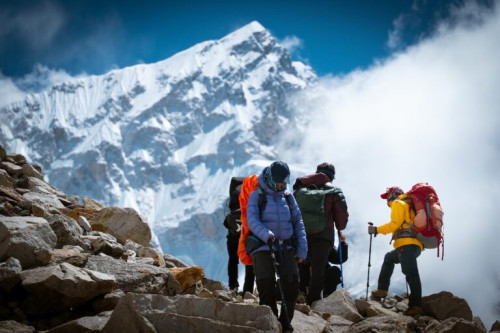
12th Nov, 2025
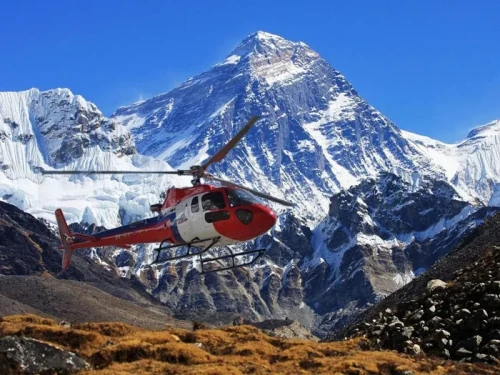
28th Oct, 2025

19th Oct, 2025

18th Oct, 2025

14th Oct, 2025

14th Oct, 2025
